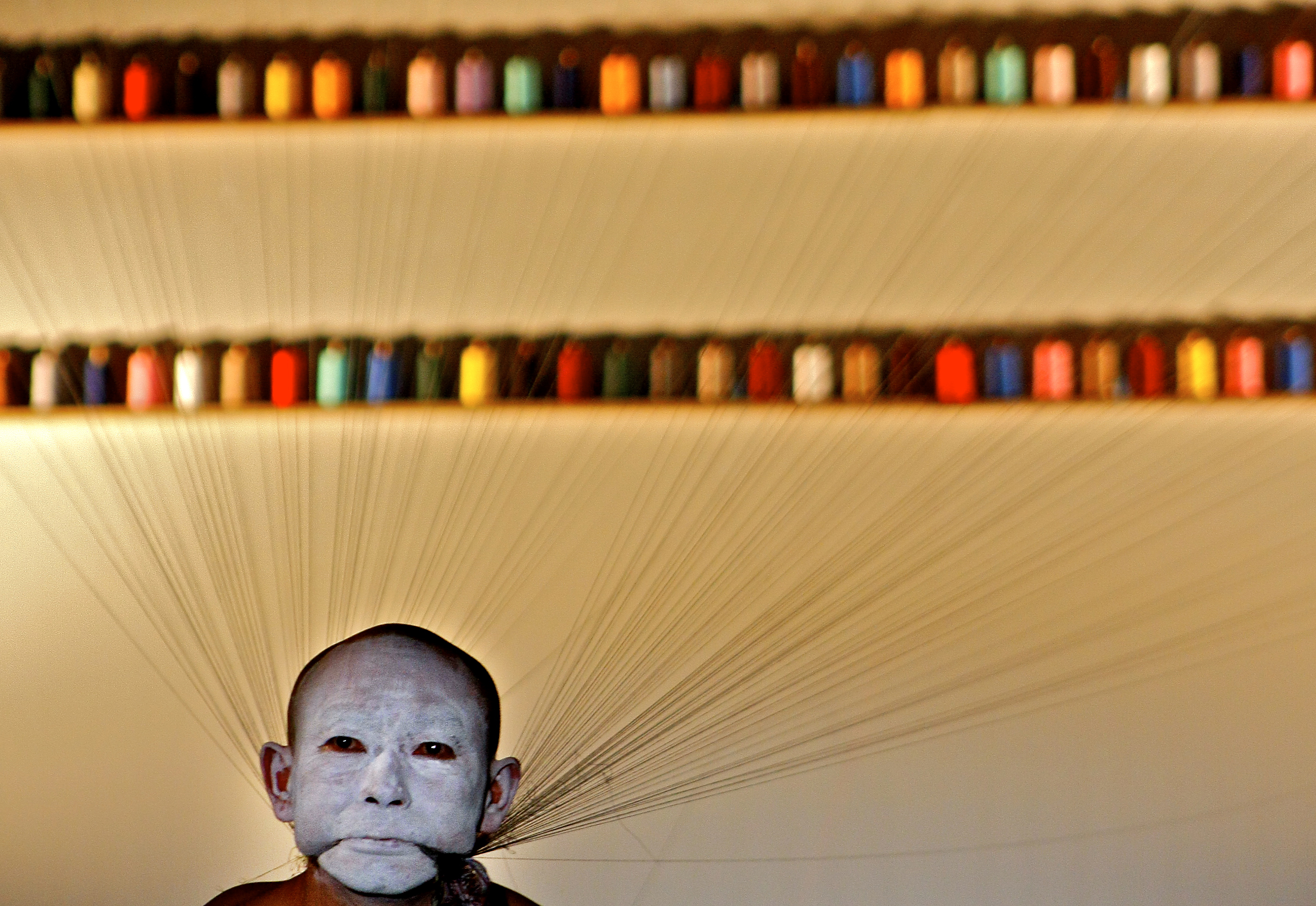Hirokazu Kosaka to unveil 'Kalpa' at the Getty for the Pacific Standard Time festival

Tonight, Butoh master Ugori will perform in “Kalpa” a performative and sculptural site-specific installation created by artist Hirokazu Kosaka for the J. Paul Getty Museum. “Kalpa,” a Sanskrit word that translates roughly to “eon,” will launch the Pacific Standard Time Performance and Public Art Festival.
By Lenika Cruz
Jan. 19, 2012 4:16 p.m.
Japanese artist Hirokazu Kosaka wouldn’t say much about his upcoming sold-out performance at the Getty Museum on Friday, but he did say this: He hopes to achieve nothing.
“But when the Japanese say “˜nothing,’ it actually means “˜everything,'” he said.
Titled “Kalpa,” Kosaka’s site-specific sculptural and performative installation will kick off the Pacific Standard Time Performance and Public Art Festival, which will feature more than 30 events in 11 days. After the show sold out, the Getty released a limited number of tickets, which sold out again quickly afterward.
While Kosaka said he wants to save details of “Kalpa” for the actual show, he offered a small and obscure glimpse through the peephole.
“There’ll be hundreds and hundreds of thread spools coming down to the audience, with 12 million candle lights beaming onto their bodies,” he said.
The title of the performance is in Sanskrit and is defined in many ways, commonly as “eons of time.” Kosaka said he sees it as time and space without conjunction. The idea of “kalpa” has been with him from a young age, but it impressed itself markedly into his adult life when his father gave him a gift after Kosaka graduated from art school.
It was a box. Inside, Kosaka found millions of poppy seeds.
“This signifies “˜kalpa,'” he said. He explained “kalpa” in two ways. One: Imagine a huge empty box, and every 100 years, a man comes and opens the lid, puts a seed in it, closes it and goes away. A hundred years later, another man comes and puts another seed in it, and on and on until the box is full.
Two: Imagine a huge stone, and every 100 years, a “heavenly maiden” or angel comes down from the sky and sweeps the surface of the stone with her silk sleeves ““ just once ““ before flying back up and not returning for another hundred years. When the rock has disappeared, one “kalpa” has elapsed.
Kosaka said he thinks of “Kalpa” as an “approach piece.” He compared it to the experience of going to a sushi bar. You go in, sit down and the chef gives you ginger, tea and miso soup, all of which are “approaches” to the first taste of sushi. In this way, “Kalpa” prepares the audience’s palate for the rest of the Pacific Standard Time festival.
Other performers who will spin “Kalpa” to life include a small company of dancers led by Butoh master Oguri, harmonica player Tetsuya Nakamura and musician and composer Yuval Ron.

